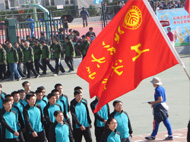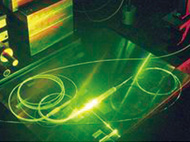题目:Organic CMOS materials platforms for printed electronics
报告人: Dr. Henry Yan
Polyera Corporation, Skokie, IL, USA
主持人:黄岩谊 特聘研究员
时间:6月16日(周一)上午10:00
地点:廖凯原1号楼212会议室(一层)
欢迎广大老师和研究生参加!
联系人:侯仰龙 hou@pku.edu.cn 010-8252-9028
http:/subpaget.asp?id=69
报告内容摘要:
There are two commercially relevant OTFT structures, the bottom-gate bottom-contact and the top-gate bottom-contact structures. Both structures have their advantages and disadvantages. For example, the top-gate structure allows for fine patterning of the source and drain electrodes on plastic substrates by a variety of solution and printing processes. However, the risk of using this device structure is that solution processing of the dielectric layer on the semiconductor may negatively affect semiconductor performance. For the bottom-gate structure, the patterning of source and drain electrodes on the dielectric layer requires a highly robust dielectric film and it is quite challenging to print small features. The advantage of this configuration is that the semiconductor layer is deposited at the last step reducing the risks of decreasing the active layer charge transport characteristics. Traditionally the top-gate structure has been more challenging especially for n-channel semiconductors.
We report here our recent progress enabling high-performance top-gate organic thin-film transistors (OTFT). Electron mobility of ~ 0.2 cm2/Vs was achieved for top-gate bottom-contact devices tested in ambient using both the semiconductor and dielectric layers fabricated by spin-coating. To the best of our knowledge, this is first report of solution-processed top-gate n-channel TFTs with mobility higher than 0.1 cm2/Vs. Furthermore, we will also present updated performance of bottom-gate bottom-contact transistors using Polyera materials. Electron mobility of ~ 0.1 cm2/Vs was achieved in a bottom-gate bottom-contact structure with both the semiconductor and dielectric layers fabricated by spin-coating process. In this case, the dielectric material is an UV crosslinkable dielectric polymer having good compatibility with n-type organic semiconductors.
Finally, we will present our results on studying the contact resistance for top- and bottom-gate n-type TFTs. Top-gate bottom-contact structure is a staggered structure, which has larger charge injection area from source and drain electrodes into semiconductor channel. However, bottom-gate bottom-contact structure is a coplanar structure, which often exhibits significantly more contact resistance. For an air stable n-type semiconductor, there is often significant charge injection barrier from the Au electrode to the LUMO of the semiconductor. Our studies suggested that in a top-gate bottom-contact structure the contact-resistance is negligible despite the large energy level mismatch between the two materials. However, for the bottom-gate bottom-contact devices fabricated on the same chip significantly larger contact resistance was measured. Our results clearly demonstrated the significant advantage offered by employing the top-gate bottom-contact structure in terms of charge injection for n-type organic semiconductors.









